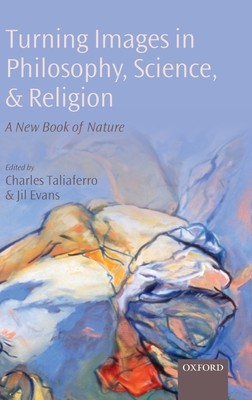
- We will send in 10–14 business days.
- Author: Charles Taliaferro
- Publisher: Oxford University Press, USA
- ISBN-10: 0199563349
- ISBN-13: 9780199563340
- Format: 15.5 x 23.4 x 2 cm, kieti viršeliai
- Language: English
- SAVE -10% with code: EXTRA
Turning Images in Philosophy, Science, and Religion (e-book) (used book) | bookbook.eu
Reviews
Description
The debate between "new atheists" and religious apologists today is often hostile. Turning Images is a book that sets a new tone by locating the debate between theism and naturalism (most "new atheists" are self-described "naturalists") in the broader context of reflection on imagination and aesthetics. The eleven original essays will be of interest to anyone who is fascinated by the power of imagination and the role of aesthetics in deciding between worldviews or philosophies of nature. Representing a variety of points of view, authors include outstanding philosophers of religion and of science, a distinguished art historian, and a visual artist.
Martin Kemp begins the book by looking at D'Arcy Thompson's vision of the natural world, combining poetry and visual images to set the stage for thinking about nature along teleological or non-purposive lines. Geoffrey Gorham then offers an overview and analysis of the images of nature found in early modern science and philosophy. Anthony O'Hear takes up the problem of accounting for the origin of mind or consciousness, highlighting some of the limitations of Darwinian evolutionary biology in terms of values. Dale Jacquette offers a thoroughgoing, naturalistic account of the emergence of intentionality and a unique argument about the emergence of art and the aesthetic appreciation of nature. E.J. Lowe advances some difficulties facing a naturalist approach to mental life. Douglas Hedley offers a cognitive account of the imagination and also advances reasons why naturalism faces deep challenges. Daniel N. Robinson offers a sweeping account of nature and naturalism, historicallyengaging Aristotle, Kant, Hegel and others. Conor Cunningham provides a take-no-prisoners critique of contemporary naturalism. Gordon Graham investigates the resources of naturalism in accounting for our sense of the sacred. Mark Wynn provides a subtle account of the imagination and perception, suggesting how these may play into the theism - naturalism debate. The book concludes with Jil Evans' reflections on the Galapagos Islands, that key, almost mythic place that became instrumental in shaping Darwin's development of his theory of evolution.
EXTRA 10 % discount with code: EXTRA
The promotion ends in 23d.08:42:05
The discount code is valid when purchasing from 10 €. Discounts do not stack.
- Author: Charles Taliaferro
- Publisher: Oxford University Press, USA
- ISBN-10: 0199563349
- ISBN-13: 9780199563340
- Format: 15.5 x 23.4 x 2 cm, kieti viršeliai
- Language: English English
The debate between "new atheists" and religious apologists today is often hostile. Turning Images is a book that sets a new tone by locating the debate between theism and naturalism (most "new atheists" are self-described "naturalists") in the broader context of reflection on imagination and aesthetics. The eleven original essays will be of interest to anyone who is fascinated by the power of imagination and the role of aesthetics in deciding between worldviews or philosophies of nature. Representing a variety of points of view, authors include outstanding philosophers of religion and of science, a distinguished art historian, and a visual artist.
Martin Kemp begins the book by looking at D'Arcy Thompson's vision of the natural world, combining poetry and visual images to set the stage for thinking about nature along teleological or non-purposive lines. Geoffrey Gorham then offers an overview and analysis of the images of nature found in early modern science and philosophy. Anthony O'Hear takes up the problem of accounting for the origin of mind or consciousness, highlighting some of the limitations of Darwinian evolutionary biology in terms of values. Dale Jacquette offers a thoroughgoing, naturalistic account of the emergence of intentionality and a unique argument about the emergence of art and the aesthetic appreciation of nature. E.J. Lowe advances some difficulties facing a naturalist approach to mental life. Douglas Hedley offers a cognitive account of the imagination and also advances reasons why naturalism faces deep challenges. Daniel N. Robinson offers a sweeping account of nature and naturalism, historicallyengaging Aristotle, Kant, Hegel and others. Conor Cunningham provides a take-no-prisoners critique of contemporary naturalism. Gordon Graham investigates the resources of naturalism in accounting for our sense of the sacred. Mark Wynn provides a subtle account of the imagination and perception, suggesting how these may play into the theism - naturalism debate. The book concludes with Jil Evans' reflections on the Galapagos Islands, that key, almost mythic place that became instrumental in shaping Darwin's development of his theory of evolution.


Reviews